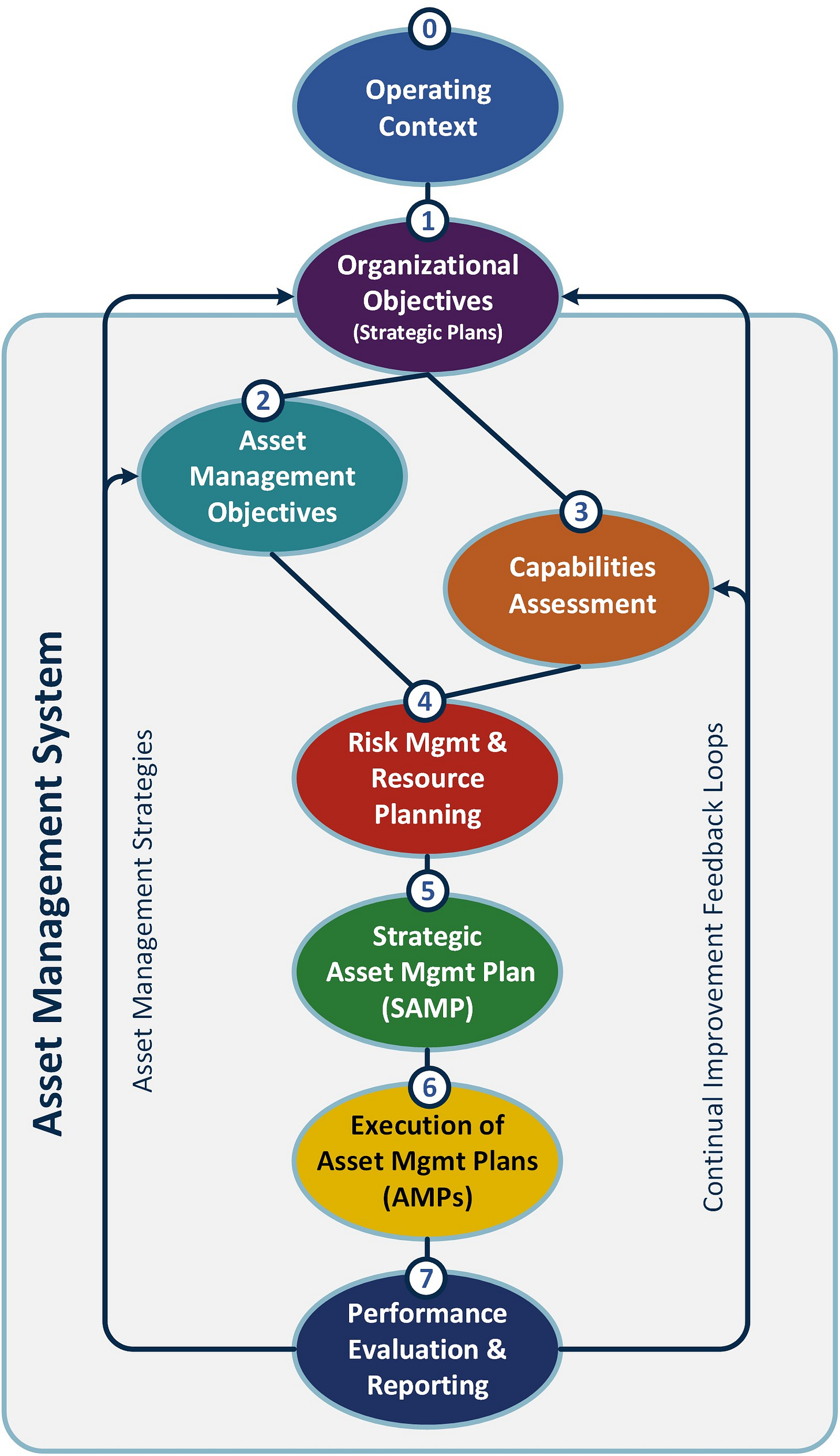Asset Management Strategy - Part 2: Planning, Plans, and Strategy
Two Part Series on Asset Management Strategy Development and Implementation
This Asset Management Framework (AMF) Journal entry continues a two-part series on Asset Management Strategy. As framed by this series, strategy is at the core of every successful management system and at the front of every effective policy or course of action. Strategy defines what the organization is aiming at. For these reasons, strategy is an essential part of Asset Management (AM) Framework implementation.
This two-part series dissects how strategy is used to develop an organization’s asset management capabilities and then covers how these capabilities are applied through an AM Framework. The first part covered development of strategy through the lens of an Asset Management System (AMS). This distinguished the division of labor between strategy and tactics. This second part builds on this and covers the implementation of strategy through management system thinking. This illuminates a pathway to integrate strategy and the plans to achieve the organization’s strategic aims.
PART 2: PLANNING, PLANS, AND STRATEGY
AM Framework Planning Orientation
The AM Framework, shown below, is configured to facilitate risk-informed resource and investment decision making.
The AM Framework is configured into Management Activity Groups (MAGs) used to coordinate activities. The activity of decision-making centers on the achievement of objectives. There are two levels of objectives recognized by the AM Framework. They are MAG #1 – Organizational Objectives and MAG #2 – Asset Management Objectives. MAG #1 objectives establish the strategic aims that the organization seeks to achieve. MAG #2 objectives define performance needed from the organization’s assets, AMS, and approach to asset management to achieve MAG #1 – Organizational Objectives. The remaining MAGs seek to achieve these ends in the context of management system thinking.
Planning through the AM Framework conforms to ISO 55001: 6. – Planning requirements. As context, ISO 55000 defines asset management and ISO 55001 covers requirements for an AMS. Neither standard explain how to implement or operate an AMS, but updated versions, to be released this year, will require that an AM Framework be defined and documented in policy to guide and govern planning activities. This is reinforced through updates in ISO 55001 and a new subclause: 4.5 – Asset Management Decision-Making. This clause includes the requirement for an AM Framework.
It is interesting to note that application of the AM Framework is independent of planning. ISO 55001: 6. – Planning’s coverage of decision-making is that it is performed in the context of the AM Framework. What this means is the AM Framework governs how decision making is performed. The result is the AM Framework becomes the means for planning in accordance with ISO 55000 and ISO 55001.
ISO 55000/1 Plans and Planning
The words plan and planning are interesting in that they may be both a noun and a verb. This highlights their complexity and dynamic nature. In this AMF journal entry, the word plan is generally a noun and the word planning is a verb. Planning is a verb that involves actions to include discovering, evaluating, analyzing, forecasting, documenting, and decision making. The result of these actions is a product, a plan that is used to document and communicate an intention to achieve a result.
The ISO 55000 series identifies two types of plans. Their relationship is hierarchical.



